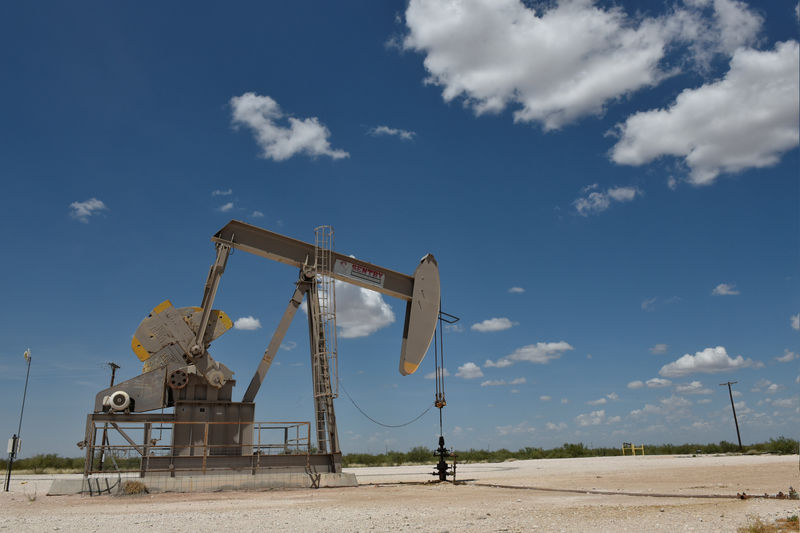(Reuters) - U.S. energy firms this week reduced the number of oil rigs operating for a second week in a row as drillers follow through on plans to cut spending this year.
Drillers cut four oil rigs in the week to July 12, bringing the total count down to 784, the lowest since February 2018, General Electric Co's (N:GE) Baker Hughes energy services firm said in its closely followed report on Friday.
That compares with 863 rigs operating during the same week a year ago.
More than half the total U.S. oil rigs are in the Permian basin in West Texas and eastern New Mexico, where active units decreased by six this week to 437, the lowest since March 2018. The Permian is the biggest U.S. shale oil play.
The rig count, an early indicator of future output, has declined over the past seven months as independent exploration and production companies cut spending on new drilling as they focus more on earnings growth instead of increased output.
"Most of the change in the weekly rig count was due to drops in both directional and vertical drilling activities," said Trey Cowan, Senior Analyst, S&P Global (NYSE:SPGI) Platts Analytics in an email.
"Since directional and vertical wells are typically shallower drilling endeavors that generally take less time from spud to release, the drop in these counts after the U.S. (Fourth of July) holiday may prove to be more noise than a signal of things to come," he said.
For the year, the U.S. Energy Information Administration (EIA) projects U.S. crude output will rise to 12.36 million barrels per day (bpd) in 2019, up from the annual record of 10.96 million bpd set in 2018.
Surging U.S. oil output will outpace sluggish global demand and lead to a large stocks build around the world in the next nine months, the International Energy Agency (IEA) said on Friday.
U.S. crude futures (CLc1) traded around $60 per barrel on Friday, putting the contract on track to rise about 5% after slipping almost 2% in the previous week as U.S. oil producers in the Gulf of Mexico cut more than half their output because of a tropical storm and as tensions continued to simmer in the Middle East.
Looking ahead, crude futures were trading around $60 a barrel for the balance of 2019
U.S. financial services firm Cowen & Co this week said that projections from the exploration and production (E&P) companies it tracks point to a 5% decline in capital expenditures for drilling and completions in 2019 versus 2018.
Cowen said independent producers expect to spend about 11% less in 2019, while major oil companies plan to spend about 16% more.
In total, Cowen said all of the E&P companies it tracks that have reported will spend about $81.1 billion in 2019 versus $85.4 billion in 2018.
Year-to-date, the total number of oil and gas rigs active in the United States has averaged 1,012. Most rigs produce both oil and gas.
Analysts at Simmons & Co, energy specialists at U.S. investment bank Piper Jaffray, forecast the average combined oil and gas rig count will slide from a four-year high of 1,032 in 2018 to 992 in 2019 before rising to 1,011 in 2020 and 1,067 in 2022.

That is the same as Simmons forecast since late June.